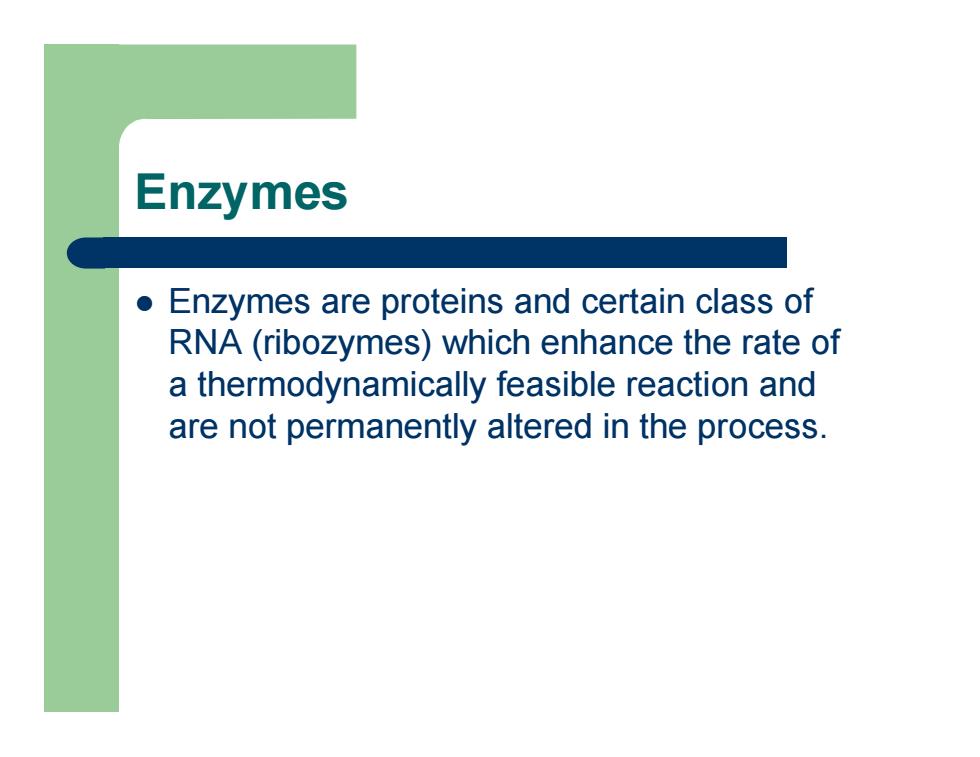
Enzymes z Enzymes are proteins and certain class of RNA (ribozymes) which enhance the rate of a thermodynamically feasible reaction and are not permanently altered in the process
Enzymes z Enzymes are proteins and certain class of RNA (ribozymes) which enhance the rate of a thermodynamically feasible reaction and are not permanently altered in the process
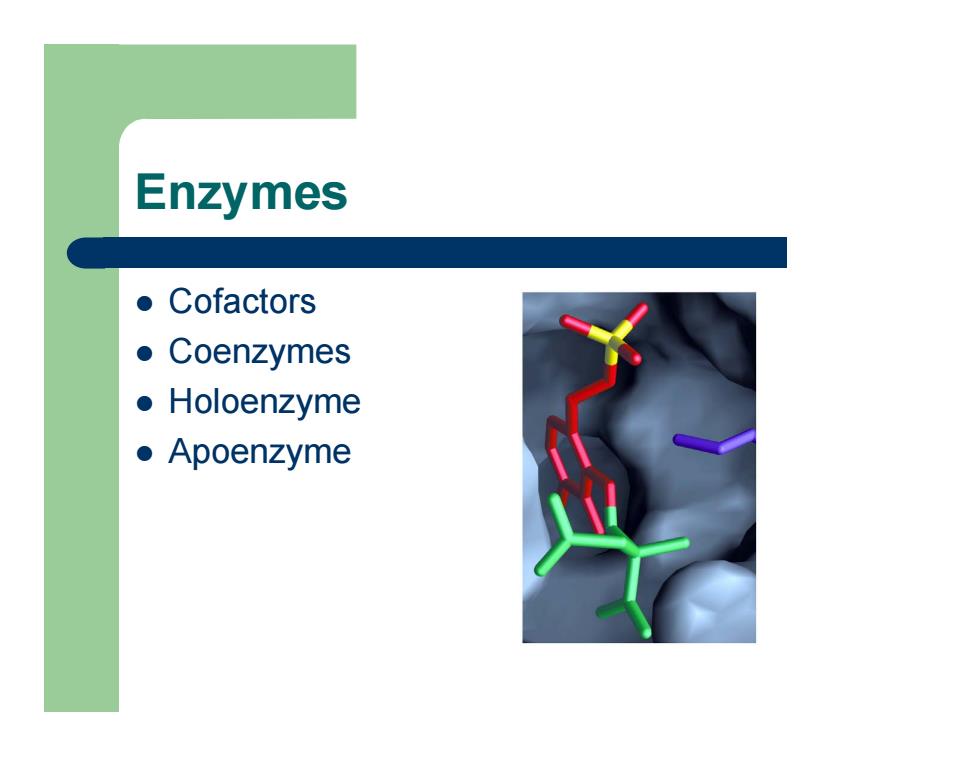
Enzymes z Cofactors z Coenzymes z Holoenzyme z Apoenzyme
Enzymes z Cofactors z Coenzymes z Holoenzyme z Apoenzyme
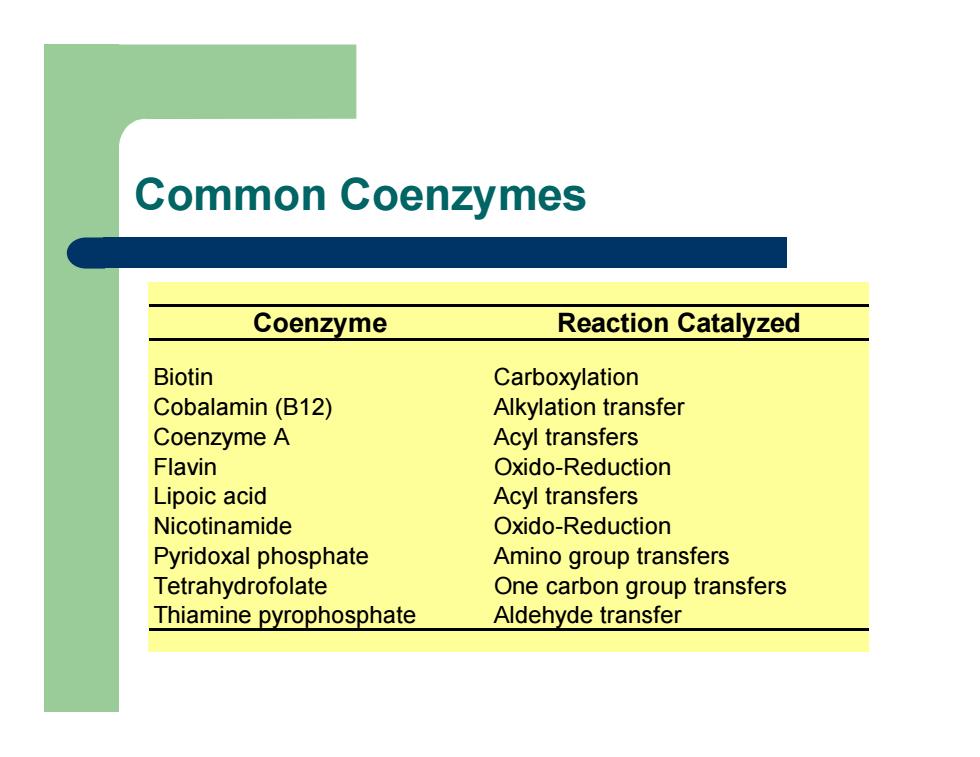
Common Coenzymes Coenzyme Reaction Catalyzed Biotin Carboxylation Cobalamin (B12) Alkylation transfer Coenzyme A Acyl transfers Flavin Oxido-Reduction Lipoic acid Acyl transfers Nicotinamide Oxido-Reduction Pyridoxal phosphate Amino group transfers Tetrahydrofolate One carbon group transfers Thiamine pyrophosphate Aldehyde transfer
Common Coenzymes Coenzyme Reaction Catalyzed Biotin Carboxylation Cobalamin (B12) Alkylation transfer Coenzyme A Acyl transfers Flavin Oxido-Reduction Lipoic acid Acyl transfers Nicotinamide Oxido-Reduction Pyridoxal phosphate Amino group transfers Tetrahydrofolate One carbon group transfers Thiamine pyrophosphate Aldehyde transfer

Why Enzymes? z Natures catalysts z Speed: 1016 over un-catalyzed rates! z Specificity: only the desired reaction occurs z Permit reactions under mild conditions
Why Enzymes? z Natures catalysts z Speed: 1016 over un-catalyzed rates! z Specificity: only the desired reaction occurs z Permit reactions under mild conditions
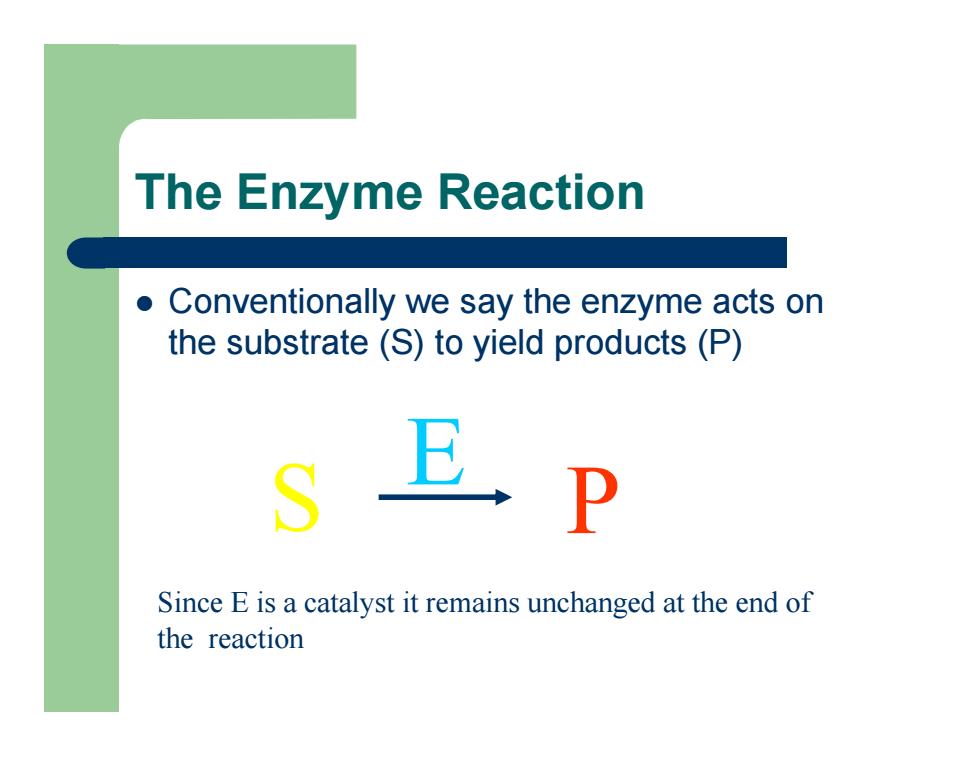
The Enzyme Reaction z Conventionally we say the enzyme acts on the substrate (S) to yield products (P) S P E Since E is a catalyst it remains unchanged at the end of the reaction
The Enzyme Reaction z Conventionally we say the enzyme acts on the substrate (S) to yield products (P) S P E Since E is a catalyst it remains unchanged at the end of the reaction
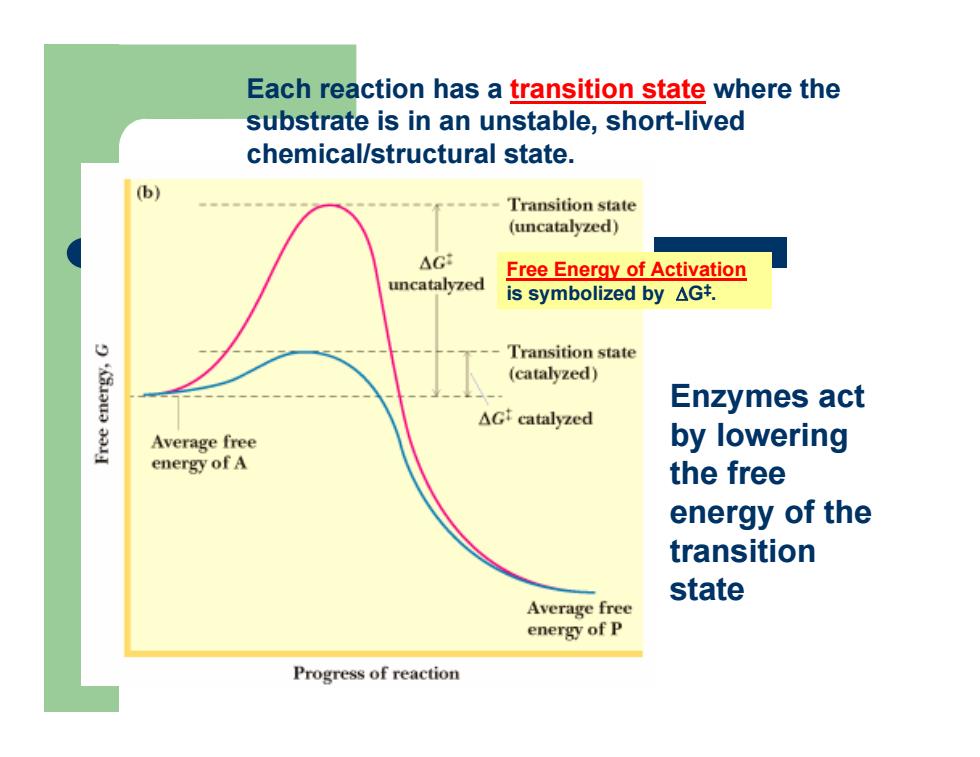
Each reaction has a transition state where the substrate is in an unstable, short-lived chemical/structural state. Free Energy of Activation is symbolized by ΔG‡. Enzymes act by lowering the free energy of the transition state
Each reaction has a transition state where the substrate is in an unstable, short-lived chemical/structural state. Free Energy of Activation is symbolized by ΔG‡. Enzymes act by lowering the free energy of the transition state
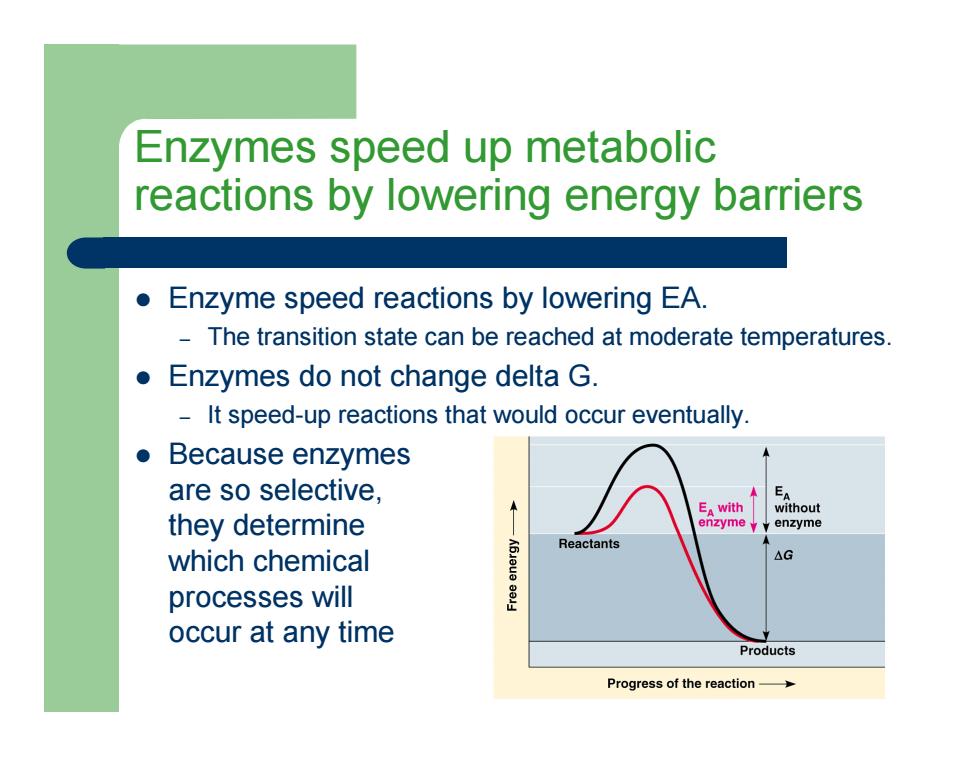
Enzymes speed up metabolic reactions by lowering energy barriers z Enzyme speed reactions by lowering EA. – The transition state can be reached at moderate temperatures. z Enzymes do not change delta G. – It speed-up reactions that would occur eventually. z Because enzymes are so selective, they determine which chemical processes will occur at any time
Enzymes speed up metabolic reactions by lowering energy barriers z Enzyme speed reactions by lowering EA. – The transition state can be reached at moderate temperatures. z Enzymes do not change delta G. – It speed-up reactions that would occur eventually. z Because enzymes are so selective, they determine which chemical processes will occur at any time

z Enzymes lower the free energy of activation by binding the transition state of the reaction better than the substrate z The enzyme must bind the substrate in the correct orientation otherwise there would be no reaction z Not a lock & key but induced fit – the enzyme and/or the substrate distort towards the transition state
z Enzymes lower the free energy of activation by binding the transition state of the reaction better than the substrate z The enzyme must bind the substrate in the correct orientation otherwise there would be no reaction z Not a lock & key but induced fit – the enzyme and/or the substrate distort towards the transition state
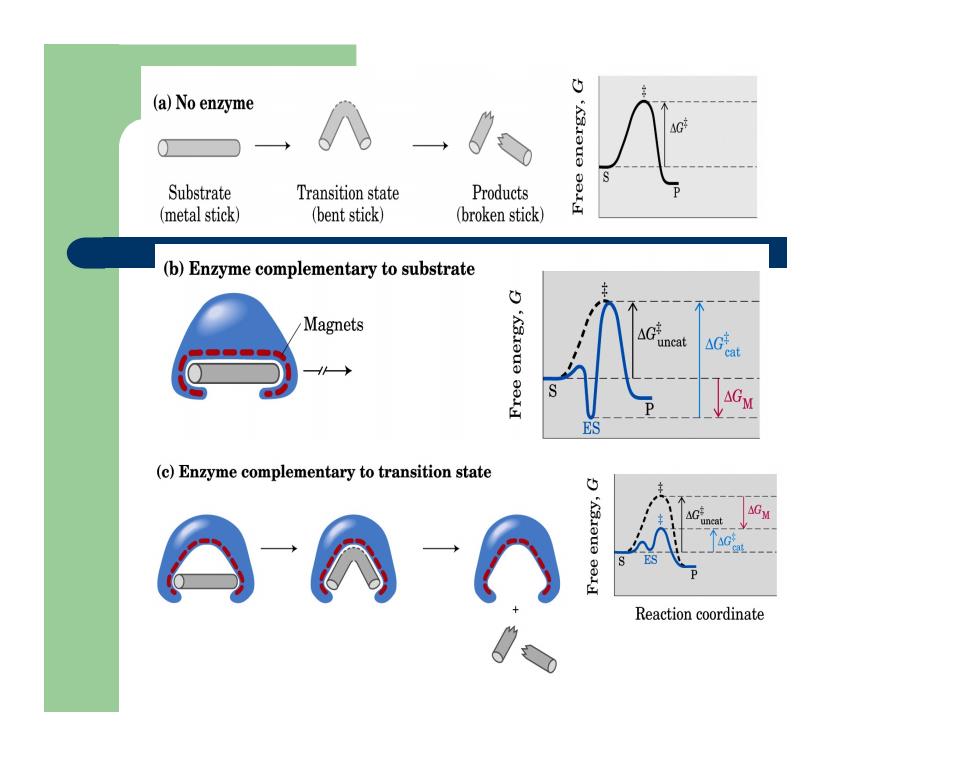
(a)No enzyme K8.oua △G Substrate Transition state Products (metal stick) (bent stick) (broken stick) (b)Enzyme complementary to substrate Magnets ES (c)Enzyme complementary to transition state Reaction coordinate

The active site z Typically a pocket or groove on the surface of the protein into which the substrate fits. z The specificity of an enzyme – fit between the active site and that of the substrate. z Enzyme changes shape – tighter induced fit, bringing chemical groups in position to catalyze the reaction
The active site z Typically a pocket or groove on the surface of the protein into which the substrate fits. z The specificity of an enzyme – fit between the active site and that of the substrate. z Enzyme changes shape – tighter induced fit, bringing chemical groups in position to catalyze the reaction